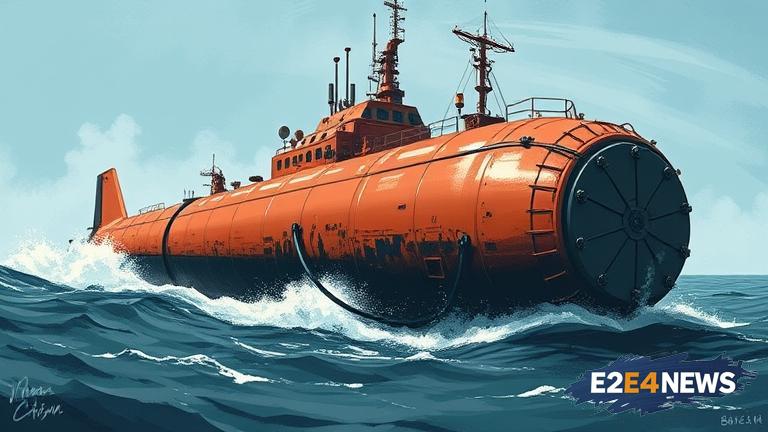The Titan submersible tragedy, which occurred on June 18, 2023, resulted in the loss of five lives, including the founder of OceanGate Expeditions, Stockton Rush. A recent report has revealed that the incident was preventable, citing a combination of human error, design flaws, and inadequate safety protocols. The report, which was compiled by a team of experts, highlights a series of critical mistakes made by the crew and the vessel’s operators, including the failure to conduct proper safety checks and the use of untested and unproven equipment. The submersible, which was designed to take tourists to the wreck of the Titanic, was found to have a number of design flaws, including a faulty life support system and inadequate emergency backup power. The report also criticizes the crew’s decision to dive in poor weather conditions, which reduced visibility and increased the risk of accident. Furthermore, the report notes that the vessel’s operators had been warned about the risks of using the submersible in such conditions, but failed to take adequate precautions. The incident has sparked widespread outrage and calls for improved safety measures in the submersible tourism industry. The report’s findings have been met with shock and sadness by the families of the victims, who are demanding justice and accountability for the preventable loss of their loved ones. The incident has also raised questions about the regulation of the submersible tourism industry, with many calling for stricter safety standards and greater oversight. The US Coast Guard and the National Transportation Safety Board (NTSB) have launched investigations into the incident, which are ongoing. The report’s conclusions have been supported by experts in the field, who have highlighted the need for improved safety protocols and more rigorous testing of submersible vessels. The incident has also sparked a wider debate about the risks and benefits of submersible tourism, with some arguing that the risks outweigh the benefits. However, others argue that with proper safety measures and protocols in place, submersible tourism can be a safe and rewarding experience. The report’s findings have significant implications for the submersible tourism industry, which is expected to face increased scrutiny and regulation in the wake of the tragedy. The incident has also highlighted the need for greater transparency and accountability in the industry, with many calling for more robust safety standards and greater oversight. In the aftermath of the tragedy, the families of the victims have established a foundation to promote submersible safety and to support research into improved safety protocols. The foundation has received widespread support from the public and from experts in the field, who are committed to ensuring that such a tragedy never happens again. The incident has also sparked a renewed focus on the importance of safety in the submersible tourism industry, with many operators and regulators committing to improved safety standards and protocols. As the investigations into the incident continue, it is clear that the Titan submersible tragedy will have a lasting impact on the submersible tourism industry and will serve as a reminder of the importance of safety and accountability. The report’s findings have been widely reported in the media, with many outlets highlighting the preventable nature of the tragedy. The incident has also sparked a social media campaign, with many using the hashtag #SubmersibleSafety to raise awareness about the importance of safety in the industry. In conclusion, the Titan submersible tragedy was a preventable incident that resulted in the loss of five lives. The report’s findings highlight the need for improved safety protocols and more rigorous testing of submersible vessels. The incident has sparked widespread outrage and calls for improved safety measures in the submersible tourism industry, and has significant implications for the industry as a whole.





